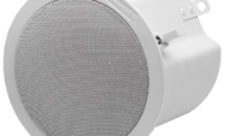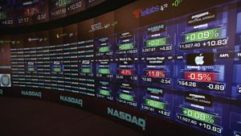
Installation Profile: Extra Credit
Feb 1, 2004 12:00 PM,
By Gary Werner
But what about financial organizations? Think of all the financial
information that is stored in databases, including credit cards, car
loans, mortgages, personal loans, and business loans. Imagine if all
that information were lost or could not be accessed. Isn’t that
information critical?
AmeriCredit thinks so. Founded in 1992, AmeriCredit is an
independent middle-market auto finance company. The company works with
a network of auto dealers to provide loans to consumers who typically
are unable to obtain financing from traditional sources. With more than
1 million customers and over $14 billion in managed auto receivables,
AmeriCredit looks to innovative technology to provide service to its
customers in the United States and Canada.
AmeriCredit began operations with just one branch in Fort Worth,
Texas, in the early 1990s and now operates 90 branch offices throughout
North America. The company’s growth and its commitment to innovation
prompted the opening of an NOC in Arlington, Texas, to monitor its
corporate data network.
The first control room it had was equipped with eight 27-inch
computer monitors mounted on a wall. It was able to accommodate only
four people, and as the company grew, more personnel were added in
order to cover different aspects of the business, which required more
space.
SIZE MATTERS
In 2002 AmeriCredit hired the Whitlock Group to build a control
room. The Whitlock Group is a well-established A/V systems integration
firm based in Richmond, Virginia, since 1955. With operations in
Irving, Texas, the company designed and built sophisticated NOCs for
clients ranging from Verizon Wireless to the Los Alamos National
Laboratory.
Account manager Craig Taylor, who specializes in control room
applications, headed up the Whitlock team. Working closely with Jess
Whitfield, senior network monitoring engineer for AmeriCredit, Taylor
and his team developed a design to turn an old office space into an
impressive control room with a distinctive “wow”
factor.
The transformation began in July 2002, and the once-empty room was
turned into a sophisticated NOC during the next four months. With an
industrial modern design in mind for the control room, the Whitlock
Group showed Whitfield several possible designs of furniture by Tresco
Consoles. The company chose to have four consoles with slick curves in
a black, white, and metallic gray finish similar to furniture found in
AT&T’s NOC.
The room has four double consoles suitable for eight IT specialists.
They’re laid out on two tiers with two consoles on each level. At each
work space, operators are equipped with two Samsung LCD monitors on
which they are able to bring up any application that is accessible on
the network. They can study the network on their small computer
monitors or share the information with their colleagues by displaying
information on the large video wall. The operators can control the
images on the screens from their desktop, making it easy to share
information and gain a much larger overview of a situation.
“They wanted to be able to see a whole bunch of information at
once,” says Taylor. “Some of the programs they monitor have
a lot of icons, and it takes a large display to get an instant snapshot
of the overall condition of the network. In the absence of a large
screen display, it takes more investigation. You can’t see at a glance
if anything’s wrong. You’d have to drill down and go across many
screens.”
According to Taylor, a common mistake made when building an NOC is
to try to cut costs by purchasing a cheaper projector that would be a
perfect solution for a conference room but would break down quickly in
a 24/7 rear-projection environment. Choosing the appropriate equipment
to ensure reliability in continuous operation is essential.
The AmeriCredit video wall is composed of 12, 50-inch Christie
GraphXMaster CX50-100U single-chip DLP display wall cubes, which are
specifically designed for 24/7 mission critical environments. Arranged
in a 2-by-6 array, the screens provide an overall image size of 60
inches in height and 240 inches in width.
Having a large display wall enables AmeriCredit to monitor the
status of all of its remote servers and locations through graphic
depictions on screen.
“We’re spread out across the country,” Whitfield says.
“The idea is to be able to get information on national events to
our managers that might affect our ability to do business. If one of
our branches isn’t functioning, it will affect how loans are
handled.”
MAKING ADJUSTMENTS
In 2001 representatives from AmeriCredit attended a control room
show hosted by the Whitlock Group. They were shown various projection
solutions that could be used in a network operations center, including
a display wall cube. Whitfield also looked into the available display
solutions before choosing to go with display wall cubes.
“We knew we wanted to go with DLP technology,” Whitfield
says. “The data we display is high resolution, so we needed a
display solution compatible to achieve consistently high-quality
images. It also seemed to be the most effective means for our size. The
cubes fit into a small area, so a dedicated room for rear projection
was not required.”
All 12 of the display wall cubes are encased together in a
custom-made black laminate base built by the Whitlock Group to create
the appearance of a seamless video wall. Because Whitfield wanted the
wall to appear completely seamless, it was important for the images
onscreen to align perfectly to create the appearance of one large
screen and for the seams and edges to match up perfectly. It had to be
so perfect that it would be possible to run a finger along the wall and
not feel any physical deviations.
The Whitlock Group built the base for the video wall and mounted all
the cubes together, but the company discovered that the uneven cement
floor prevented a seamless appearance. With a strong eye for detail,
Whitfield could stand at the back of the room and point out
imperfections in the balance of the cubes, which most people would not
notice. In order to get the display wall cubes level, it was necessary
to tear the wall down and redesign and rebuild the base to meet the
exact specifications to achieve complete balance for the screens. In
the end, the screens were mounted within half a millimeter of each
other.
“We had installed the project pretty much by the end of
September except for the fact that we had to reconstruct the
base,” said Taylor. “The custom base had to be redesigned
to provide a level and stable surface for the cubes, which took until
November. Having to compensate for a concrete floor that was not level
took a lot of redesign.”
The final result was an impressive screen that stands as the focal
point of the room. It acts almost like a large computer monitor that
can be shared by all the operators. According to Whitfield, the ability
to display a high-level overview of information enables greater
efficiency in problem solving.
CENTRAL NERVOUS SYSTEM
A short distance from the NOC is the nerve center of the
corporation, where 242 of the company’s servers reside in one room,
including 18 RISC 6000 and 4 AS/400 servers by IBM as well as
approximately 220 Compaq servers of varying models. All the information
on AmeriCredit’s customers is stored on these servers. One of the
primary responsibilities of the command center is to monitor that data
center. If a problem occurs, the IT specialists will be able to
pinpoint it and react quickly to restore service.
The fact that the servers are so close actually doesn’t make a
difference to the network.
“The servers could be in another state,” Taylor says.
“It really doesn’t matter to us as long as the server is
accessible to the network.”
Using a Christie FRC-5000 virtual display wall controller, operators
are able to access and display any application that can typically be
accessed on the AmeriCredit data network. Any number of applications
can be opened and displayed on the wall at one time with the ability to
layer, resize, or move images on the screen based on the needs of the
operators.
Redundancy and reliability were important issues to AmeriCredit in
order to ensure consistent and uninterrupted system operation. The
system installed in the NOC provides numerous redundancy and automatic
fail-over features to prevent system interruptions.
All data transfer is managed by the FRC-5000’s Ultra160 SCSI RAID
controller. Redundancy array of independent disks (RAID) is a
method that involves spreading information across multiple disk drives
for greater redundancy, bandwidth, and recovery from hard-disk crashes.
Despite information being shared among multiple drives, the computer
reads the information as if it is all stored on one large drive.
The installation at AmeriCredit uses a three-drive configuration
with RAID 5, the most common type of RAID. If one drive fails, the
other two can reconstruct the data on a hot-swapped third drive without
having to power down the controller. This prevents service
interruptions from information being lost.
AmeriCredit insisted on having two controllers, though only one is
used. The other is redundant, which ensures complete system
reliability.
MONEY, HONEY
Budgetary constraints played a role in choosing the equipment, so
the Whitlock Group reused as much of the existing equipment as it could
from the original control room, including an Extron Crosspoint 12-by-8
RGBHV and stereo audio matrix routing switcher, which allows for 12
computer inputs and 8 computer outputs.
In addition to being used to display computer graphics from the
network, the video wall is also used to watch television channels such
as the Weather Channel and CNN in order to monitor events that could
impact AmeriCredit’s network and branches.
To monitor world broadcast events, the Whitlock Group installed a
Crestron ST-Tune integrated AM/FM/TV tuner, which provides full control
of television tuning functions. There are also JBL LSR-25 powered
studio reference monitor speakers that were chosen for their
high-fidelity sound quality. For presentation purposes and to review
broadcast material, a JVC SVHS SR-TS1U videocassette recorder and a
Sony DVP-NS400D DVD player are installed in the NOC along with two RCA
DSS DRD222RD satellite receivers.
The A/V equipment is mounted on rack rails that were custom designed
and built into the black video wall console by the Whitlock Group.
Operators can control the equipment through a user interface on a
Crestron Pro2 Integrated control system virtual touch panel. This type
of remote control was chosen to provide every operator the ability to
control the images on the video wall from the desktop.
In addition, a corporate boardroom is steps away from the command
center. A large window faces the control room, providing an excellent
view of the technology that drives AmeriCredit. The boardroom, which
was furnished by the Whitlock Group, is a standalone room and is used
regularly for meetings and public tours.
There’s a large oval table in the center of the room where people
can watch the activity in the control room, or they can watch a
presentation projected onto a large 60-by-80-inch Da-Lite screen that
is electrically retractable into the ceiling. The projector, a Christie
LX33, is also mounted on an electrically retractable device so that
when not in use, it can also be hidden from view in the ceiling.
AmeriCredit considers the boardroom and the control room to be
marketing showpieces. Analysts, customers, and investors are regularly
brought to Arlington in order to see the impressive command center. It
has become a valuable tool for AmeriCredit in terms of providing a more
effective environment to monitor the status of its network as well as
to demonstrate that the company is on the leading edge of providing
excellent customer service through technological innovation.
“The control room has had a positive impact on the operators
being able to do their jobs,” Whitfield says. “Instead of
being bound into the system and only being able to view a limited
amount of information at a time, the large screen gives them a
high-level overview of what’s going on. They now have more flexibility
to resize and rearrange images based on problems that they’re working
on.”
Gary Werneris senior business manager of Christie Digital
Systems’ advanced media display group.
For More Information
Christie Digital Systems
www.christiedigital.com
Compaq
www.compaq.com
Crestron Electronics
www.crestron.com
Da-Lite Screen Company
www.da-lite.com
Extron Electronics
www.extron.com
IBM
www.ibm.com
JBL
www.jbl.com
JVC
www.jvc.com
RCA
www.rca.com
Samsung
www.samsung.com
Sony
www.sony.com
Tresco Consoles
www.trescoconsoles.com
Whitlock Group
www.whitlockbps.com










